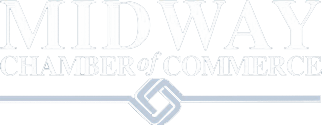About the Chamber
Mission Statement: The Midway Chamber of Commerce represents businesses and organizations that are dedicated to Building a Stronger Midway by providing programs and services that help members grow and thrive.
Strategic Plan
The Midway Chamber adopted a new strategic plan for 2024-2026 with the support of Mighty Consulting. The four focus areas are community, education, membership and partnerships. Click here to view the document.
History of the Midway Chamber of Commerce
Much of the destiny of the Midway area of St. Paul has been shaped by a dedicated group of businesspeople and residents who came together in 1919 to form the Midway Club, predecessor of the Midway Chamber of Commerce. By that time the Midway community had become an important regional hub for transportation, industry, commerce and education.
Commercial development, short line railroad transportation and the growth of the streetcar system played key roles in the Midway area’s development. The Interurban Streetcar line, which was completed in 1890, along University Avenue, was hailed as a much needed link between the two cities’ business districts. The Midway area’s prominence on the streetcar map was also assured by the completion of the streetcar company’s Midway shop at Snelling and University.
In the 1880s the Midway area became home to the Minnesota Transfer Railway Company, the brainchild of St. Paul railroad magnate James J. Hill. The presence of the street car and rail activity spurred significant commercial and industrial growth in the Midway. Early Midway industries provided a vast array of goods for residents of the northwestern U.S., including mattresses, beds, chairs, tables, pianos, furnaces, stoves, radiators, brooms, linseed oil products and farm equipment.
When the Midway Club was founded in 1919 it drew members from throughout the area. Soon the Midway Club would support and promote the young business communities of North and South St. Anthony Park, Merriam Park, Macalester Park, Groveland Park, Como Park and Highland Park. Among the early businesses that made a mark on the Midway were the Griggs Cooper and Company, which manufactured candy and crackers, Brown and Bigelow, Waldorf Paper Products, H.B. Fuller Company, several banks and many other ventures.
The new Midway Club also worked closely with the emerging residential neighborhoods in the area, providing critical leadership on countless neighborhood and regional issues during the crucial years of major growth and development in the western half of St. Paul. By January 1921, the Midway Club had 702 members and its own “Midway Booster” song. The club was instrumental in attracting new businesses to the Midway, in improving transportation systems, in obtaining street lights for University Avenue, and in working with the area neighborhoods, a tradition that continues today.
Through it all, the Midway kept on growing, in 1923 alone, more than $8 million in new buildings went up. The next year, Montgomery Ward added a $750,000 nine-story expansion. The addition provided the area with its landmark Ward’s Tower, which stood in the heart of the commercial area until the 1990s when it was replaced by a new regional shopping center, Midway Marketplace.
The Midway Club continued to grow as well and began its longtime tradition of luncheon meetings with an informative guest speaker in 1923 (a tradition that continues to this day). In 1924, the Midway Club opened its membership to women. Throughout this time and the 30s and 40s, the Midway Club continued to be an important voice, battling with the city over traffic islands and traffic signals on University Avenue, promoting the area as a growing center for auto and trucking firms, and attracting more new development to the area such as Pepsi Cola, Northwest Airlines, Rihm Motor Co., and KSTP. In 1952 the Midway Club voted to change its name to the Midway Civic Club because it more accurately reflected the clubs activities. The club’s primary activities continued to center on economic development, the promotion of the Midway as a good place to shop and live, and snaring the area’s share of city property tax dollars. The Club was successful by all accounts, attracting more than $15 million in new construction or renovations between 1951 and 1955.
During the 1950s and 1960s the growth popularity of the automobile had a dramatic impact on the Midway, which became know as “auto row.” At one point, University Avenue was the home to more than a dozen auto dealers and more than 60 trucking firms. As automobile travel became popular, shopping centers replaced many of the small businesses as customers demanded convenience. A $6 million Midway Shopping Center brought many new stores to the area.
In the mid 1970s, the Midway Civic Club changed its name again and became the Midway Civic and Commerce Association and in 1992 the Club became the Midway Chamber of Commerce. The Midway area has changed as well. The opening in 1996 of Midway Market place, which replaced Wards tower, was a major addition to the Midway and attracts shoppers from a wide radius. Retail trade remains an important part of the Midway economy. Industrial firms, which helped shape much of the Midway’s early years, continue to find a home in the Midway as well through such successful projects as Energy Park and Westgate Industrial Park. Office users are increasingly attracted to the Midway because of the reasonable lease rates and ideal location between the downtowns of Minneapolis and St. Paul.
The future of the Midway is bright thanks to the strong leadership provided since 1919 by the organization now known as the Midway Chamber of Commerce.
